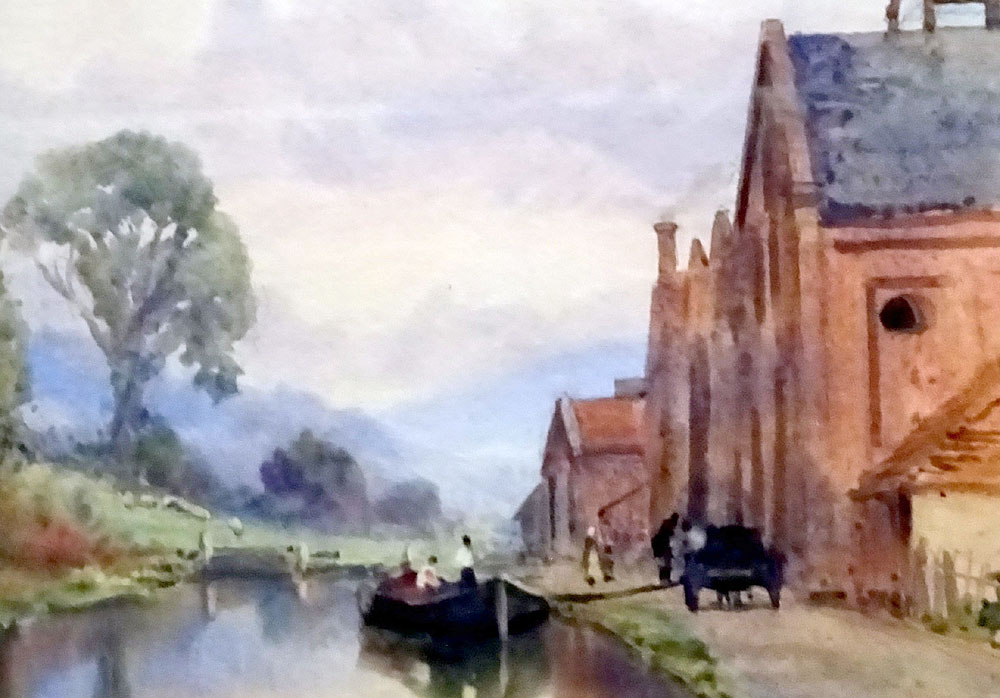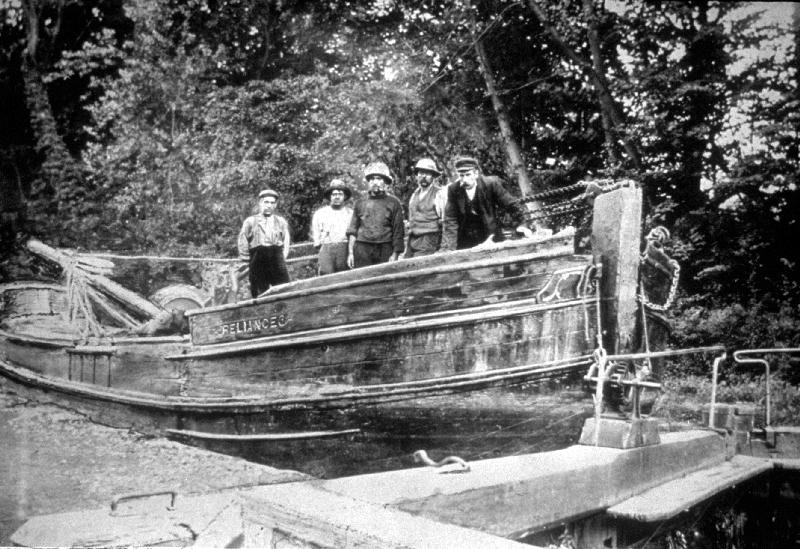Hugh Conway-Jones outlines the story of coal deliveries to the gasworks, including the remarkable role of captain James Herbert and his son Benjamin spanning 44 years.


Stroud Gasworks was established beside the Stroudwater Canal in 1833 and expanded in the 1860s. It received regular shipments of coal by barge, and bye products coke and tar were taken away by barge. When a coal delivery was expected, men gathered on the towpath hoping to get a casual job discharging the cargo, and the gasworks foreman chose who would work each day. This involved men loading the coal on to a hand-barrow and carrying it across the towpath – so passers by had to tread carefully.
At the gasworks, the coal was processed to produce town gas for distribution by pipes, including one which ran under the canal towpath as far west as Eastington. The process also produced bye products which could be very smelly, making working in the area quite unpleasant at times. However, it became known that one of the smelly chemicals was good for people with coughs and colds, and children with such complaints were often brought for a walk along the towpath in the hope of benefiting from inhaling the smell.
Early deliveries of coal were made by sailing barges owned by local traders. Then in 1861 the Gas Company had their own barge built on the canal bank nearby (close to the modern slipway off Strachans Close). Named Reliance, this became a regular sight on the canal, averaging 40 trips a year to collect 65 to 70 tons of coal from Newport. Other barges were also employed when needed.


From 1876, the master of the Reliance was James Herbert who had been brought up in the shipping community established around the villages of Frampton, Saul and Arlingham. From leaving school, he had worked on a succession of local sailing vessels that traded around the Severn estuary and thus learned much about the difficult tidal conditions and rocky shores of the area. He evidently prospered, as he was able to purchase vessels, and in 1897 he became master of one of them, leaving his eldest son Benjamin to take over the Reliance.
The Reliance continued carrying coal to Stroud gasworks in the early years of the twentieth century, but the outbreak of the First World War increased the risk of sailing to Newport. So from 1915, the coal was sent by rail over the Severn Railway Bridge, and the barge loaded at Sharpness instead. However, inadequate dredging of the canal gradually reduced the weight carried per trip, and when this dropped below 50 tons in 1920, Reliance was sold. For a short time, the traffic was handled by the barge Ila which could carry nearly 60 tons, but this came to an end in 1922.
At that time, the gasworks did not have direct rail access, so presumably coal was collected from a nearby railway yard by horse and cart, but it was not long before proper arrangements were made. The Stroud branch of the Stonehouse & Nailsworth Railway ran along the side of the hill behind the gasworks, and in 1924 a siding was provided to serve a tippler to fill wagons on a narrow-gauge line to the gasworks below.
As other local industries also gave up receiving coal by canal, traffic on the canal effectively died out in the 1930s, but there was one last initiative. In the early days of the Second World War, there were moves nationally to make the best possible use of the waterways in order to relieve pressure on the railways. This prompted the Severn & Canal Carrying Co to set up a trial delivery of midlands coal to the gasworks in December 1940 with a second boat in May 1941. However, although the boats were only carrying 20 tons, the condition of the canal made the trips so difficult that they were not repeated, and that was the end of commercial traffic on the canal.
Sources
Description of discharging coal from the memories of John Stockbridge.
Location of build of barge Reliance from D2879/3/2.
Movements of the barge Reliance and change of master from D1180/4 and D3080.
End of regular coal shipments to the gasworks from D1180/4/41.
Start of coal by rail to the gasworks from 'The Nailsworth & Stroud Branch' by Colin C Maggs.
Last two deliveries in the 1940s from D1180/1/10 p150 and D1180/Acc11549/Box1/12, letter 19 Jun 1954.